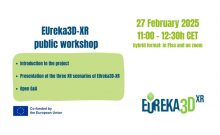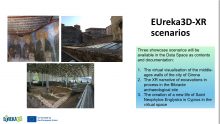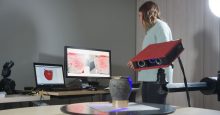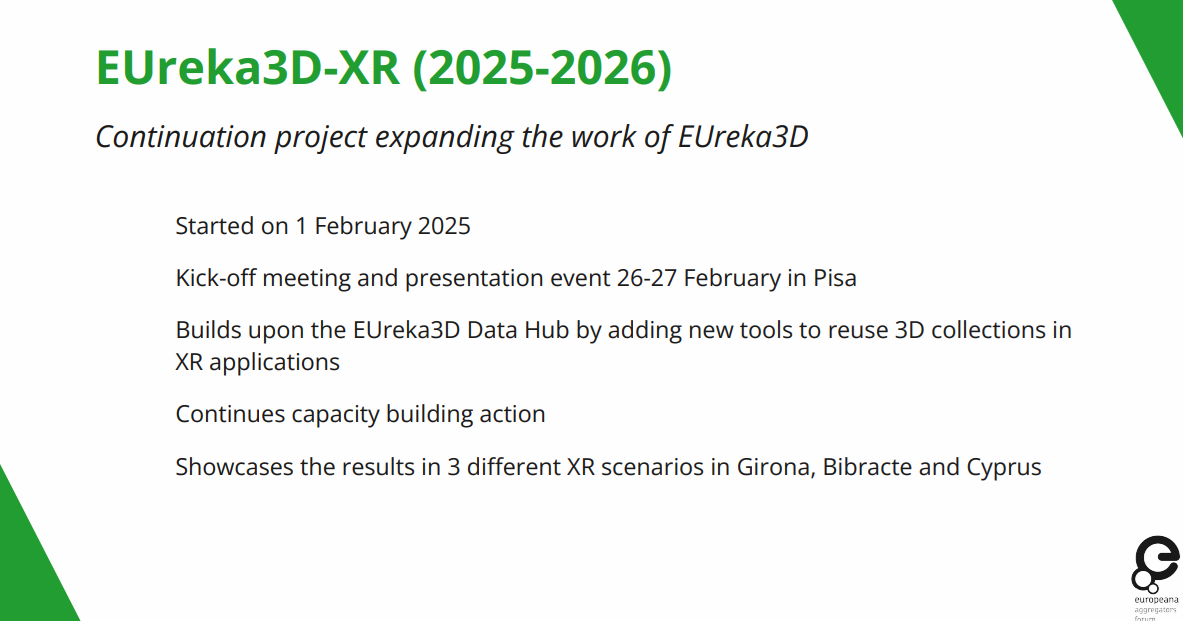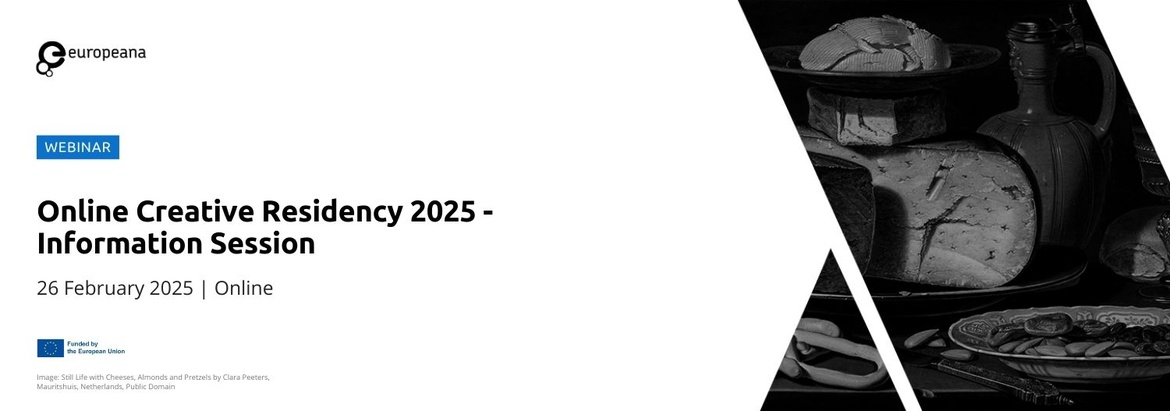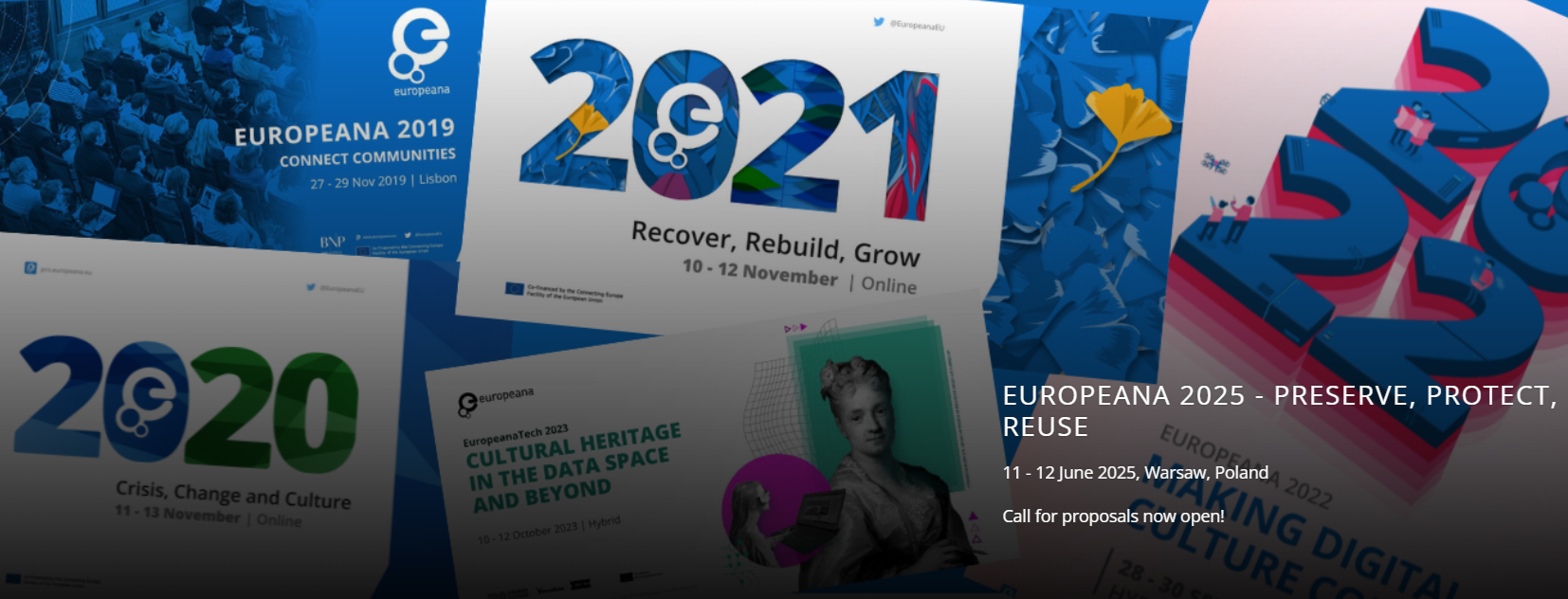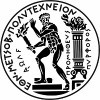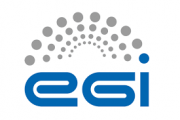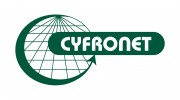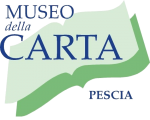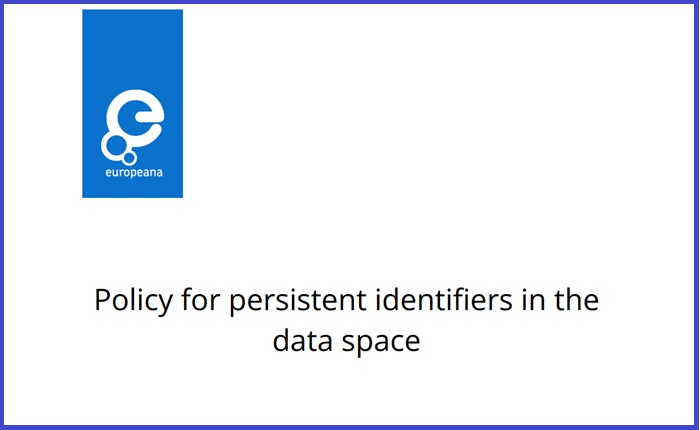
In the digital transformation of the cultural heritage sector, the concept of Persistent Identifiers (PIDs) is becoming more known and used by heritage institutions to enrich their online collections and improving their discoverability, accessibility, interoperability and reusability over time and across different systems and throughout time.
With the scope of establishing a shared understanding and provide guidance that also set the basis for best practice adoption and identifiers management, the Europeana Initiative is introducing a policy for persistent identifiers in the data space. The policy was collaboratively developed by Europeana team and key partners of the data space project, particularly consulting aggregators and other initiatives that use PIDs in their workflow, such as EUreka3D and EUreka3D-XR projects where PIDs are automatically assigned to the 3D collections published in Europeana via the EUreka3D Data Hub infrastructure.
The policy contains 20 principles which provide a framework to assess the resilience and trustworthiness of persistent identifiers in the common data space for cultural heritage, also raising awareness about the importance of PIDs and support the adoption of identifiers by cultural heritage institutions. The next phase involves the assessment of current practices in CHIs to determine how they align with the policy’s principles, identifying barriers and exploring solutions to address their challenges in adopting PIDs.
Read more and access the Policy in this Europeana Blog



